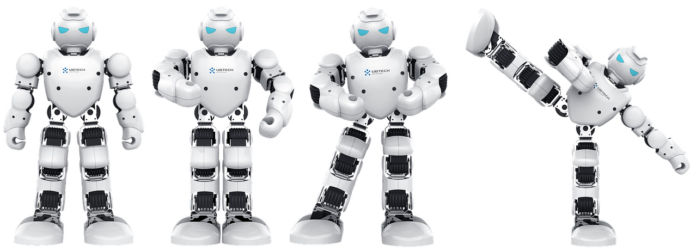Robotics has come a long way in the past few decades, and the field is expected to continue to evolve and grow in the coming years. In this article, we’ll take a look at the past, present, and future of robotics in 2022, and explore some of the key trends and developments that are shaping the field.
First, let’s take a look at the past. The history of robotics dates back to ancient times, when people used simple machines such as levers and pulleys to perform tasks. However, the modern concept of robotics as we know it today really began to take shape in the 20th century, with the development of electronic and mechanical systems that could be programmed to perform tasks automatically.
In the early days of robotics, the focus was primarily on industrial applications, with large, heavy machines being used in manufacturing and assembly lines to perform tasks such as welding and painting. However, as technology advanced, robots began to be used in a wider range of applications, including transportation, healthcare, and entertainment.
Now, let’s take a look at the present. In 2022, robotics is a rapidly growing field that is being used in a wide range of industries and applications. Industrial robots, for example, are still widely used in manufacturing and assembly lines, but they are becoming more advanced and more flexible, with the ability to perform tasks that were previously considered too complex or delicate for machines. Mobile robots, on the other hand, are becoming increasingly popular in applications such as exploration, mapping, and delivery.
In addition to industrial and mobile robots, there are also a growing number of smaller, more specialized robots that are being used in a variety of applications. For example, medical robots are being used in surgery and other medical procedures, while agricultural robots are being used to perform tasks such as planting and harvesting. Service robots, such as vacuum cleaners and lawn mowers, are becoming more common in homes and businesses, and personal robots, such as AI-powered assistants, are becoming increasingly popular as well.
Finally, let’s take a look at the future. The future of robotics is hard to predict, but it is clear that the field will continue to evolve and grow in the coming years. One of the key trends in robotics is the increasing use of artificial intelligence (AI) and machine learning, which are being used to enable robots to make decisions and adapt to new situations. This could lead to the development of robots that are more flexible and capable, and which are able to perform a wider range of tasks.
Another key trend is the increasing use of robots in fields such as healthcare, agriculture, and service. As robotics technology continues to advance, robots are likely to become more affordable and more widely available. This could lead to an increase in the use of robots in a variety of industries and applications, including healthcare, agriculture, and service.
For example, in the healthcare industry, robots could be used to perform tasks such as surgery, assistive care, and rehabilitation. In agriculture, robots could be used to perform tasks such as planting, harvesting, and pest control. In the service industry, robots could be used to perform tasks such as cleaning, delivery, and customer service.
As robots become more advanced and more widely available, they are also likely to play an increasingly important role in other areas of our lives, such as transportation, entertainment, and education. Overall, the future of robotics looks bright, and it is clear that robots will continue to transform the way we live and work in the coming years.





